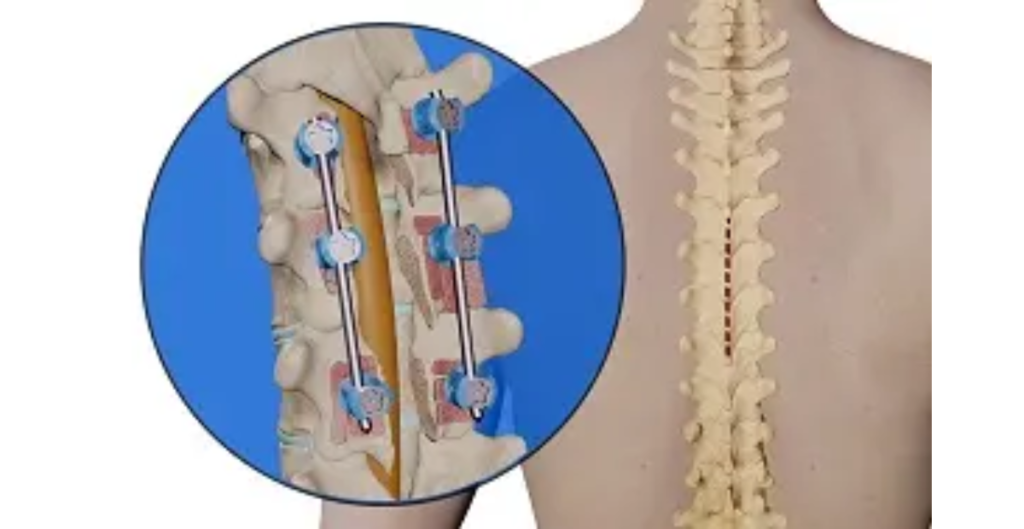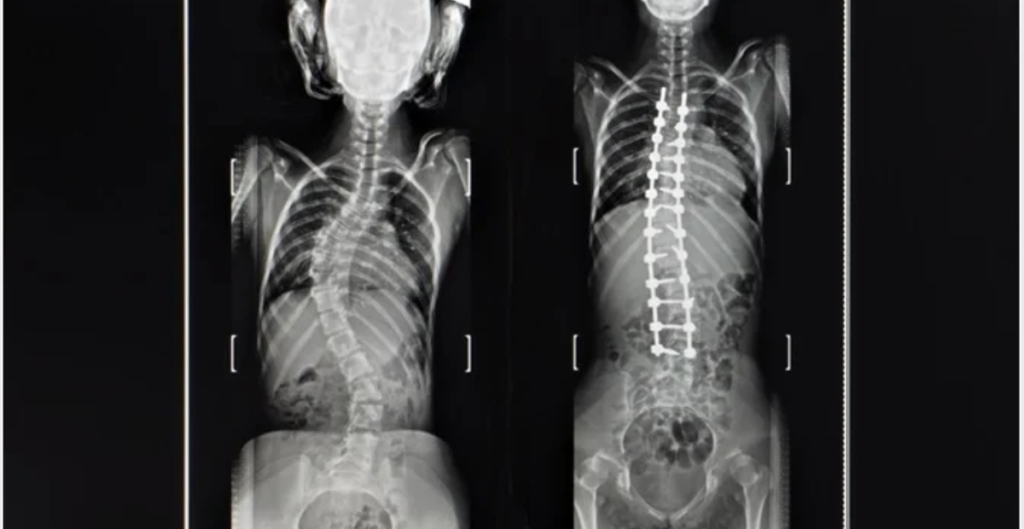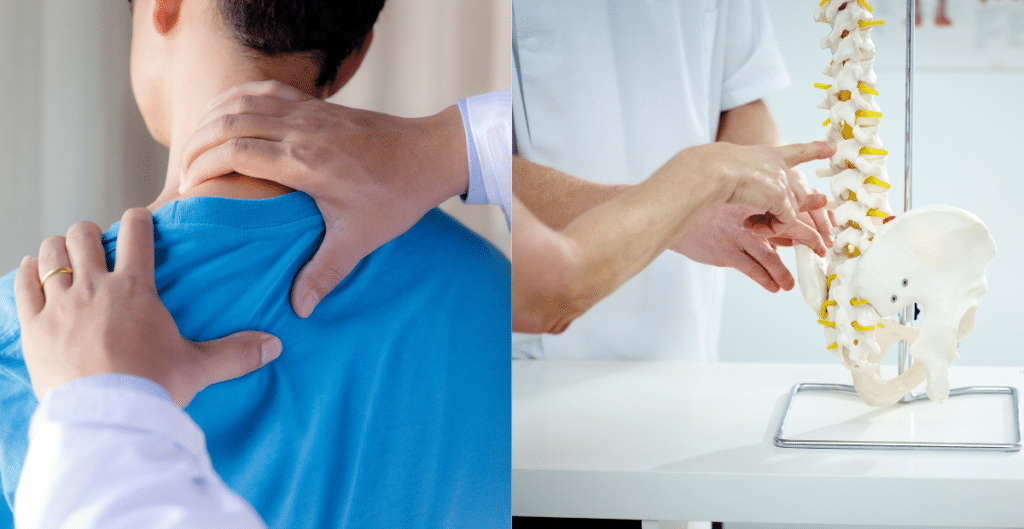Can You Go to a Chiropractor with Rods in Your Back?
The presence of spinal rods can often lead to questions regarding the post-operative care and treatment options available, especially after spinal fusion surgery. For a lot of people, chiropractic treatment is the first point of contact for backache relief, but how does that perspective change in the presence of any hardware, say rods in your back? If you’re considering seeing a chiropractor, whether for general back pain or specific conditions like scoliosis, it’s important to understand how treatment options might be affected by spinal rods.
The Fundamentals of Spinal Fusion and Rods in the Back
Spinal fusion is a surgical mechanism that binds two or more vertebrae in a definite position to prevent any possible movement between them. It is most commonly carried out when one suffers from a curvature of the spine (scoliosis), has some fractures in the spine, herniated discs, or degenerative arthritis that is advanced. Furthermore, in order to enhance this fusion, rods, screws, or plates are inserted into the spinal area with the intention of stabilizing the spine and promoting long-term bone development.
Why Are Rods Necessary In Spinal Fusion?
Rods and other apparatuses implant in the back to facilitate recovery – as a healing support system, the backbone remains in position within these rods while they heal. A joint chiropractor may be involved in the recovery process, ensuring that the spinal rods don’t adversely affect joint function.
In due time, bony growth occurs and the adjacent vertebrae become one solid bone mass, however the rods are left inside, to prevent any movements of the entire spine. These rods do provide an external strength, internal structure, but unfortunately this also means that movement is restricted within the affected area. This is particularly true in the case of chiropractic care since the use of traditional techniques in treating these parts of the spine may be perilous or outright impossible.
Importance of the Chiropractor in Maintenance of the Spine
Chiropractic services involve the spine and its associated muscles and nervous systems. The chiropractor physically adjusts the spine by placing pressure on specific segments that are out of alignment to relieve tension on the nerves and joints. In the majority of cases, such services can reduce pain, increase the posture, and overall health of the patient. Nevertheless, chiropractors need to modify their treatment to patients with internal fixation devices. For those seeking treatment from a pediatric chiropractor or an infant chiropractor, understanding these modifications is crucial.
Benefits of Chiropractic Care
Chiropractic treatment has a lot of advantages that include the following:
-
- Minimizing back neck, joint pain and pains
Chiropractors have speciality to relieve the patient of pains in the joints, the backbone, shoulder blades and neck. The techniques used by a chiropractor help to minimize the pain.
-
- Enhancing the alignment of the body as well as its range of movement
Chiropractors enhance the flexibility in the patient’s body, they help to increase the muscular movement and give body a proper shape.
-
- Relieving the tightness of the muscles
Muscles are known to relax after chiropractic care. The techniques used by chiropractor stretch the joints and lessen the tightness and stiffness of the muscles.
-
- Improving functioning of the nervous system
Chiropractic care helps to regulate the nervous system too.
These advantages are vital for patients who have had spinal surgery since chiropractic treatment would enhance the working of parts of the spine that were not fused back. These are also relevant when consulting a chiropractor for hip bursitis or other specific joint-related issues.

Concerns with Chiropractic Care for Patients with Spinal Rods
The question arises: is chiropractic treatment contraindicated for patients with rods in their spines? While the basic answer is that traditional and aggressive spinal manipulation would be out of the question, modified techniques can still alleviate pain and strengthen areas. It is well within the training of a chiropractor to recognize the limits of a patient with spinal hardware and alter the approach to treatment.
Limitations and Risks
Chiropractic adjustments usually entail the use of controlled force upon certain portions of the spine. In this instance, however, over rods methodologies cease due to limited enhanced bony growth over that range. The attempt to adjust the fused segment of the spine also poses a risk to the rods by excessive force being exerted or by the rod itself being broken. Also, adjusting above or below the fusion site without considering the fusions can create stress on the remaining spine.
Understanding Spinal Flexibility Post-Fusion
In layman’s terms, spinal fusion is the process of fully restricting the movement of certain vertebrae within the spine. Spinal rods and screws serve to restrict spinal mobility at the given sites. It is still possible for the portions of the spine that are not fused to be mobile. However, these segments tend to bear the brunt of movement since the fused regions do not move, and this leads to overuse injury in such segments. This is due to the need for a delicate balance which is the reason for the over cautious nature of chiropractors in dealing with patients with metal rods.
Chiropractic Techniques for Patients with Spinal Hardware
While traditional spinal adjustments might be out of the question for some patients with rods in their back, such patients can still benefit from valuable treatments. In this case, rather than over manual therapy, the emphasis is on capacity to maintain basic musculoskeletal health with less invasive approaches.
Soft Tissue Therapy
Out of all possible methods as an example of soft tissue therapy for patients with spinal rods, this is one nearly everyone employs; it is easy, it works. This is the process of working on the muscles, ligaments and tendons around the spine so as to relieve stress, increase circulation and enhance recovery. By paying attention to these soft tissues, a chiropractor is able to help ease pain and stiffness without the need to touch the patient’s spine.
Instrument-Assisted Adjustments
Chiropractors can use instrument-assisted techniques for spinal fusion patients. These use small, hand-held devices that allow the chiropractor to provide directed, gentle pressure to specific parts of the body. This allows the chiropractor to provide adjustments without physically compressing the spine, which makes this technique more appropriate for patients with spinal rods.
Non-Spinal Adjustments
Chiropractors are not restricted to the treatment of the spine; they are free to work on the joints of the hips, shoulders and neck as well. Due to the presence of spinal fusion and compensatory movements, these areas may also become strained and painful. Non-spinal adjustments may assist in restoring normalcy in the regions.
Stretching and Mobility Exercises
Post-operative patients are frequent recipients of stretching and mobilizing exercise interventions – a common practice among chiropractors. The latter purpose is to keep limber the unfused parts of the spine and inhibit other body parts from becoming jaded. In patients with rods, gentle, guided stretching may be very helpful for the patient to relieve tension without straining the fused areas of the spine.

Consultation with a Healthcare Provider
It is imperative that a patient’s surgeon or other healthcare professional be consulted before the initiation of chiropractor. It is important to understand that the healthcare professional will evaluate the treatment based on his or her surgical history and rehabilitation. This may include such activities as obtaining and reviewing current diagnostic imaging studies, such as X-rays or MRIs, in order to confirm appropriate healing of the spine and securing of the rods in place.
Obtaining Permission for Chiropractic Treatment
Your healthcare professional may also need to authorize you to undergo chiropractic care. This personal authorization is to indicate that the patient’s fusion is healed completely and the chiropractor will not engage in doing anything that will put the rods or the screws in danger. Such professional advice is very essential, especially for those seeking chiropractic care after surgery, as it reduces risks significantly.
The Need of Speaking Up to Your Chiropractor
Chiropractic care is a common rehabilitation practice that is recommended for patients who have undergone spinal fusion surgery. Therefore, the relationship between the chiropractor and the patient must be well established at the very beginning. In this case, the few things that a patient has to explain in detail include the operation, the placement of the rods and any issues they may be having at that time.
Personalized Care Plans
Such a chiropractor understands that every patient requires different treatment strategies. They also understand the need for avoiding any high-velocity or aggressive manipulations. Instead, they will want to apply techniques that have very low risk of causing problems with the fastening hardware. By understanding your own limitations, it is possible to design a care plan that will help alleviate problems without causing injury.
What to Expect During Your First Visit
Your first chiropractic visit shortly after the spinal fusion will undergo a different process compared to a normal chiropractic adjustment session. Be prepared to acknowledge that discussing your treatment objectives and medical history with your chiropractor will take longer than normal. The very first meeting may consist of soft tissues therapy and stretching etc.
Advantages of Chiropractic Therapy for Patients After Surgery
It is not uncommon for patients who have undergone a spinal fusion operation to suffer from other sites in their spine or its muscles. Therefore, chiropractic care includes some key benefits, for instance:
Pain Relief and Improved Mobility
Most patients find that they are able to move more freely and experience less pain in areas of the spine which have nothing to do with the fusion. Using techniques to unstick non-fused body segments, Mobile Chiropractors improve mobility within fused body segments allowing a further range of motion to the patients.
Rehabilitation Support
Chiropractors can collaborate with physical therapists and assist you in your rehabilitation process. Physical rehabilitation does enhance the spine’s strengths and functions but it does not relieve pain and tension in the muscles where the spine is attached, and so spinal therapy supplements it.
Long-Term Spine Health
When there are spinal rods which most cases limit patients, they would wish to avoid near future spine complications. If performed correctly, there are few chiropractic treatments that one could consider to avoid his or her spinal longevity. With regular gentle adjustment they help control pain, enhance posture and strengthen the areas of the spine that have not been surgically treated.
When to Avoid Chiropractic Care
Although chiropractic care is very efficacious for a majority of patients, there are certain instances where it is advisable not to seek treatment. You should avoid chiropractic care if:
-
- There’s no medical clearance from your surgeon for chiropractic adjustment.
-
- There is still inflammation, infection or any other postoperative complication that has persisted after spinal surgery.
-
- In the vicinity of the fused vertebrae, there is severe pain or instability.
Where chiropractic care is not indicated for a particular case, one may consider safer options like physical exercises, massage or even acupuncture.
Chiropractic Alternatives for Spinal Fusion Patients
In cases where chiropractic treatment is not applicable, there are other therapies that can aid in your rehabilitation and maintenance of the spine.
Physical Therapy
The objective of physical therapy is to rebuild the supportive musculature of the spine within safe limits while increasing functional mobility. Therapists can adjust the shift of focus to incorporate the surgical parameters of recovery enabling the patient to build up strength and functional improvement progressively.
Massage Therapy
Massage therapy does not involve manipulation of the spine, it can aid chiropractic care by relaxing tight muscles, enhancing blood flow, and inducing calmness to the body. It is possible to manage pain and stiffness originating from the fusion zone and avoid overcompensating other joints and muscle groups by routinely having your fusion zone assessed through massage.
Acupuncture and Holistic Approaches
On the other hand, for the patients looking for more natural healing methods, acupuncture may come in handy. A traditional Asian treatment involves inserting needles in affected areas of the body to help in the treatment of disorders such as imbalance in the musculoskeletal system.
Conclusion
Chiropractic care can still be an option for those with spinal rods, but it requires a modified, cautious approach. By avoiding aggressive adjustments and focusing on soft tissue work, chiropractors can provide pain relief and support overall spine health without risking damage to the rod. Always consult with your healthcare provider before starting chiropractic care, and work with a chiropractor experienced in treating patients with spinal fusion surgery.



